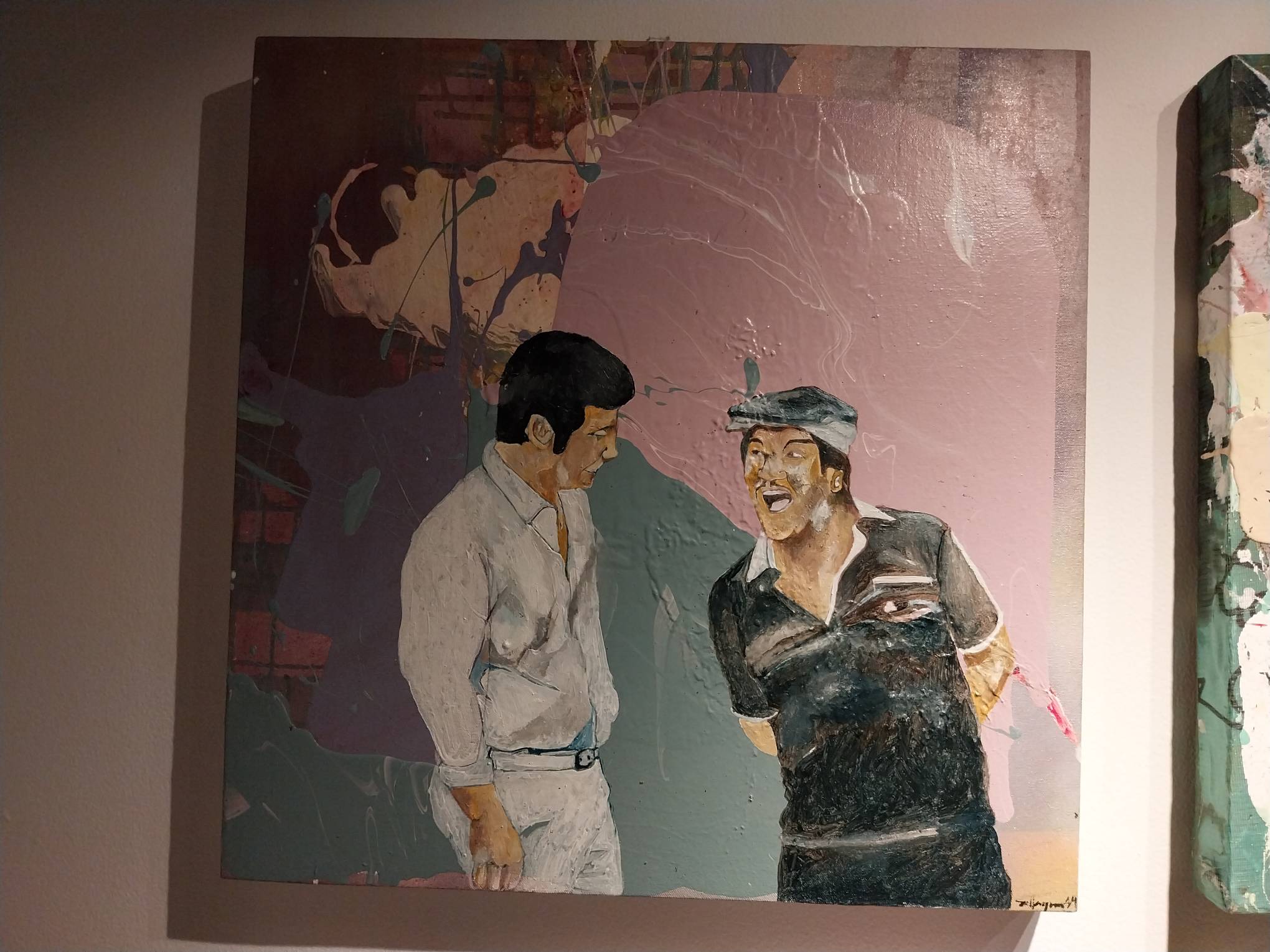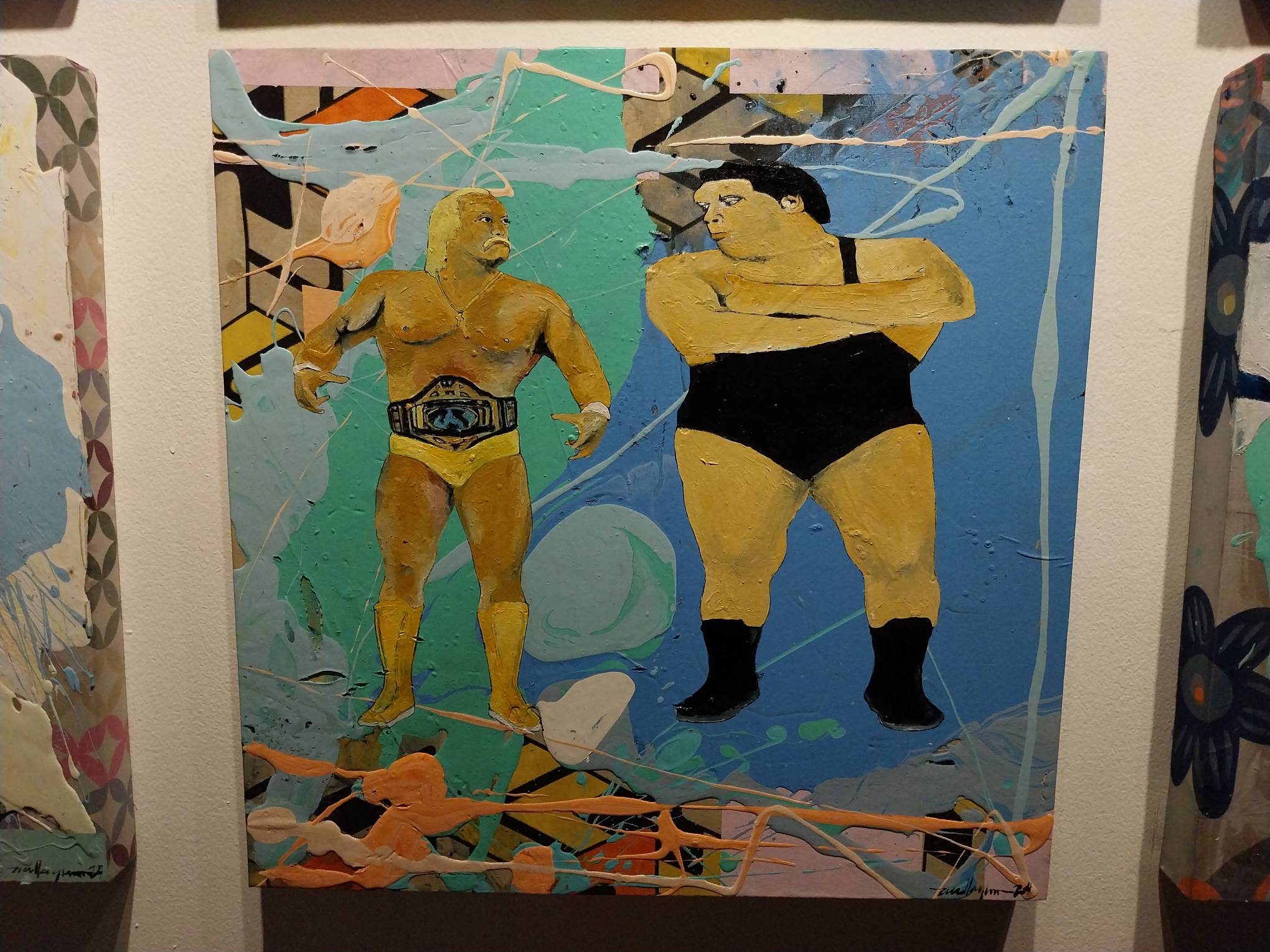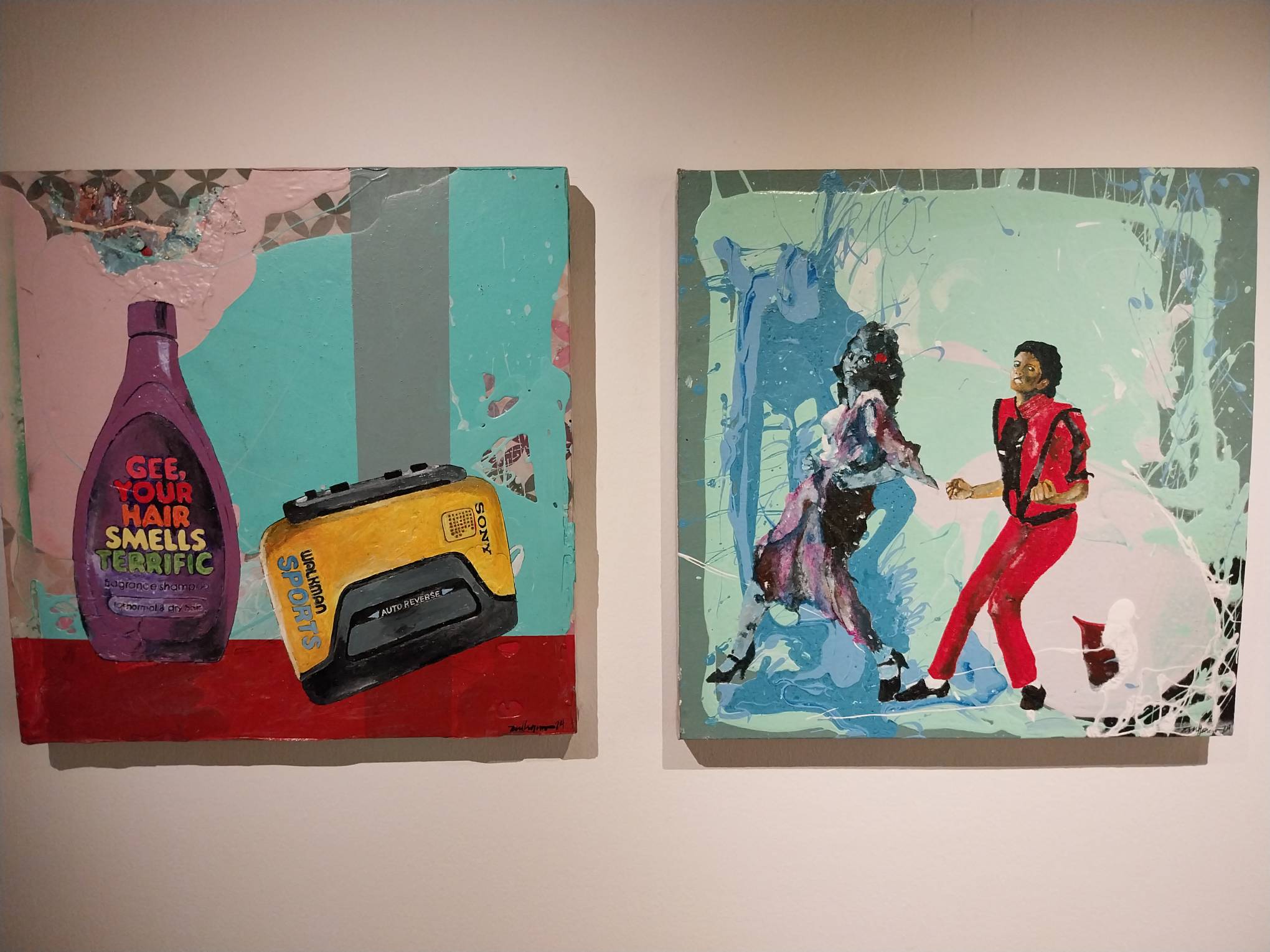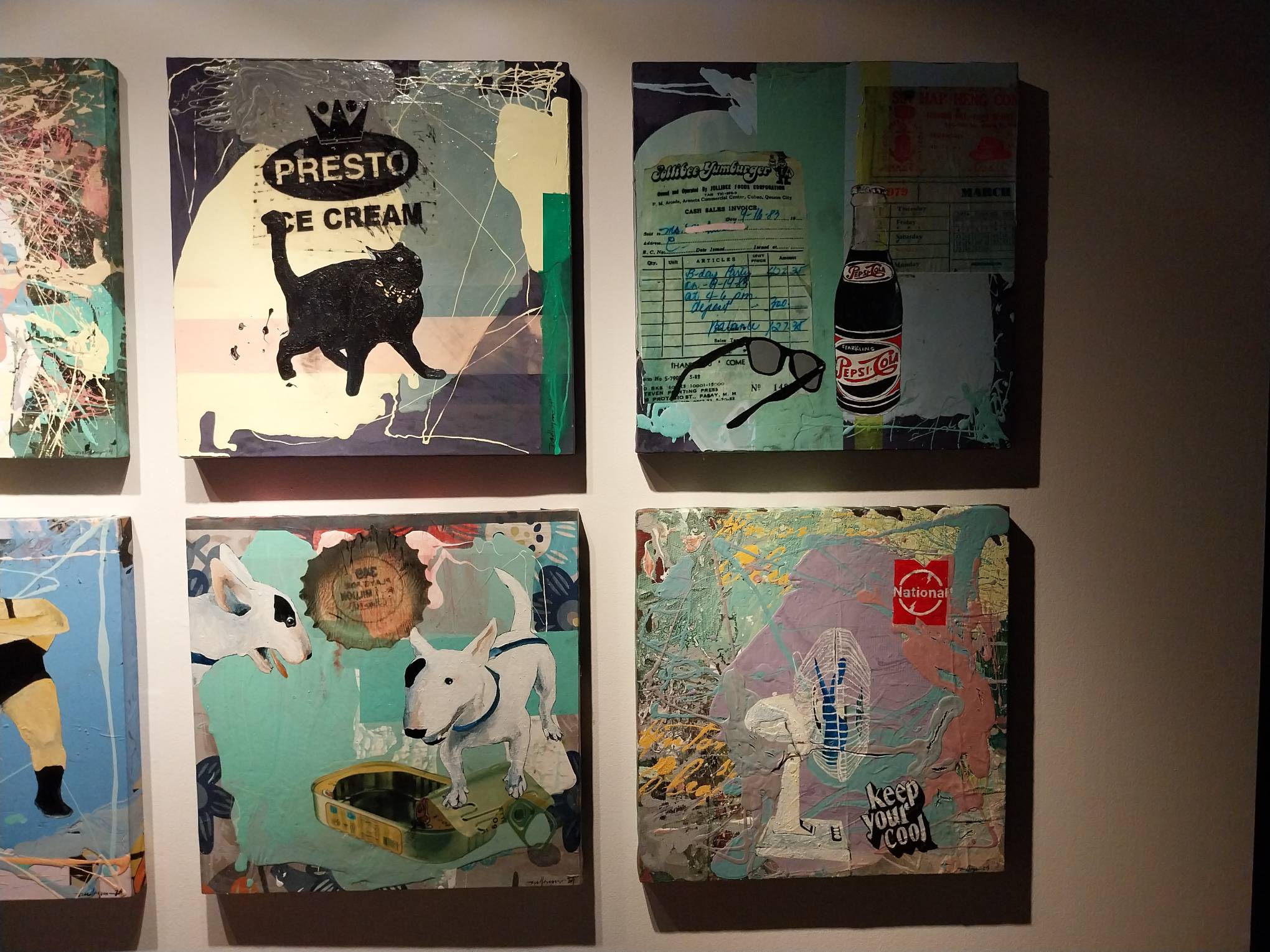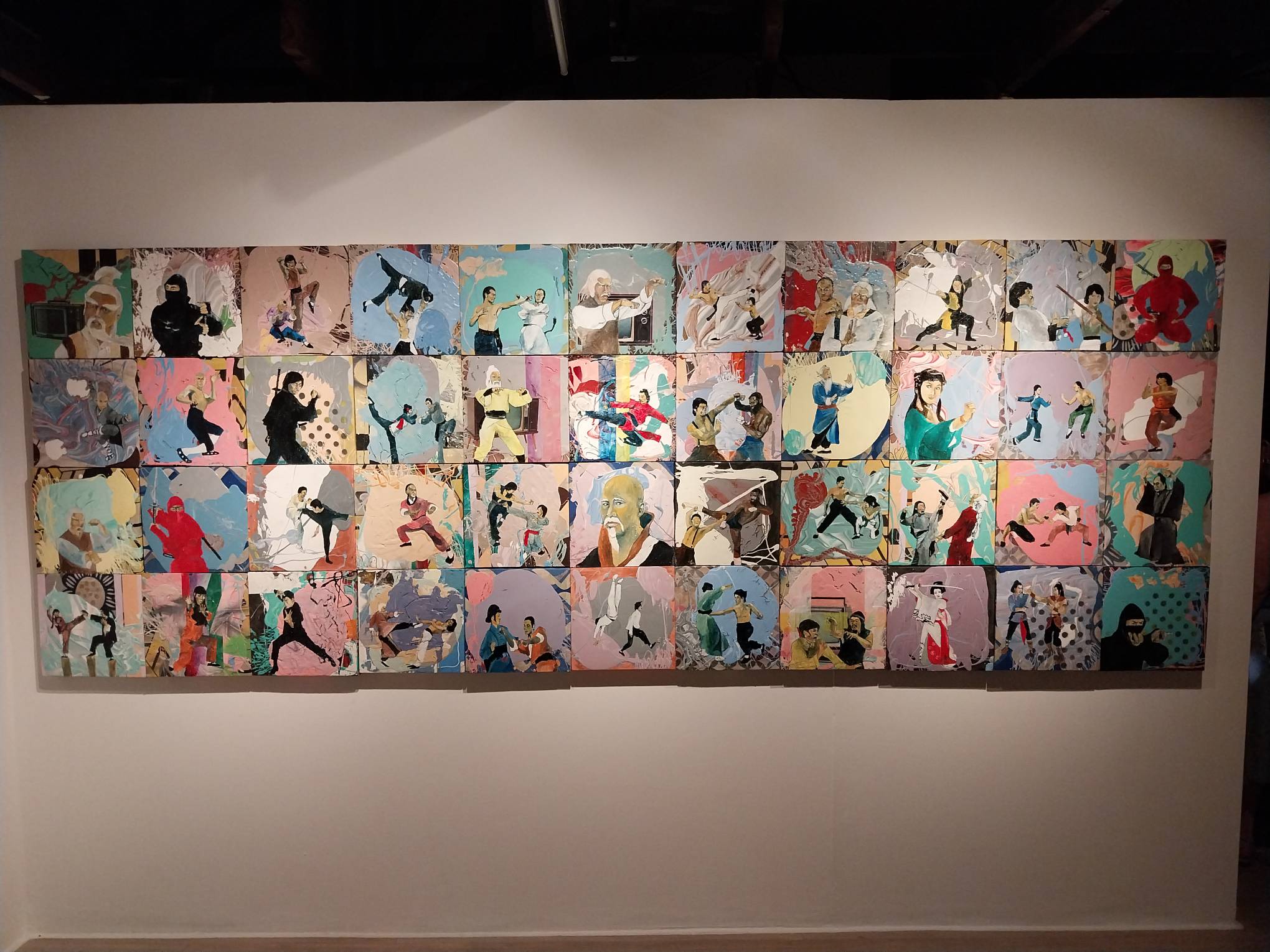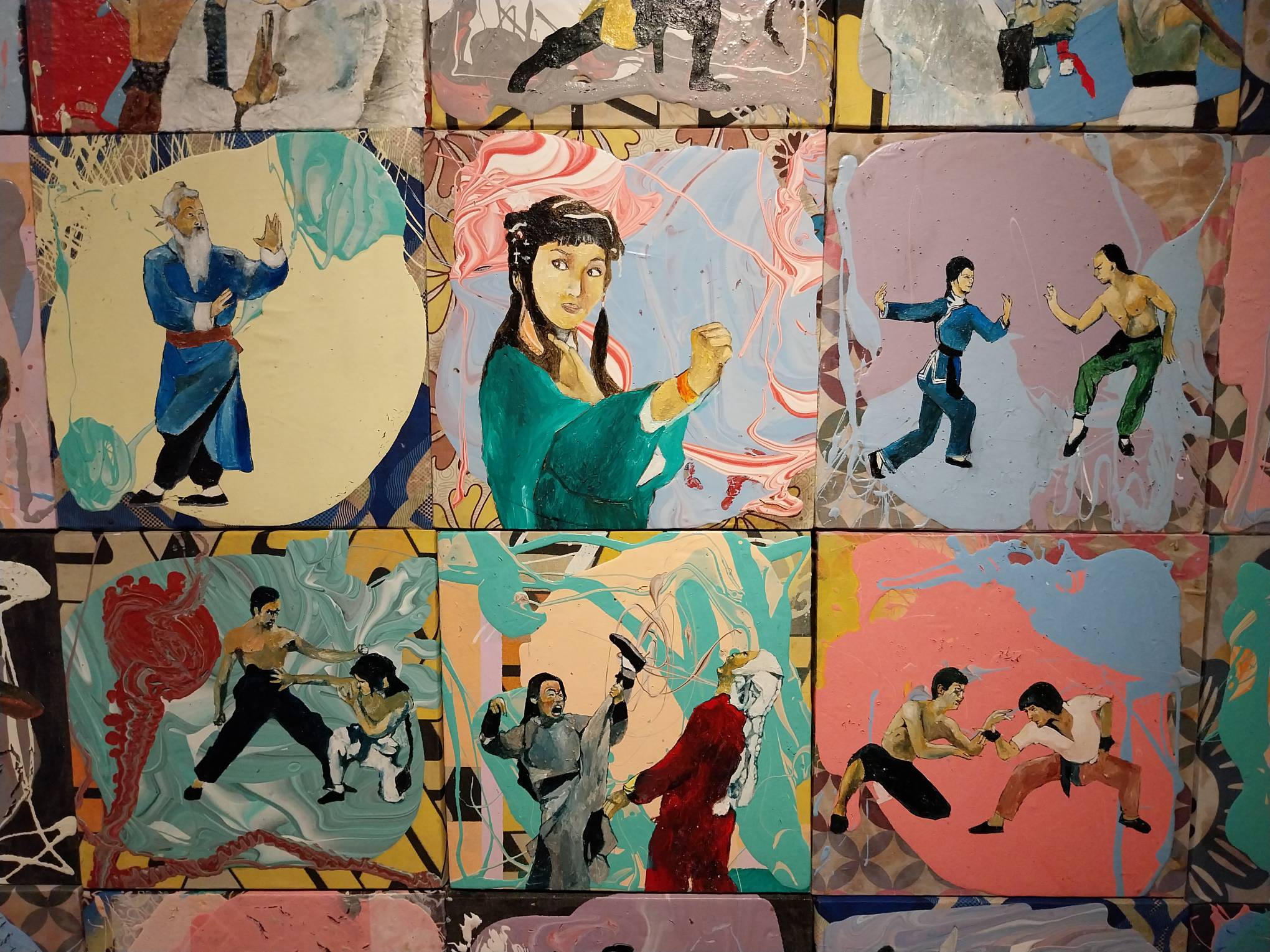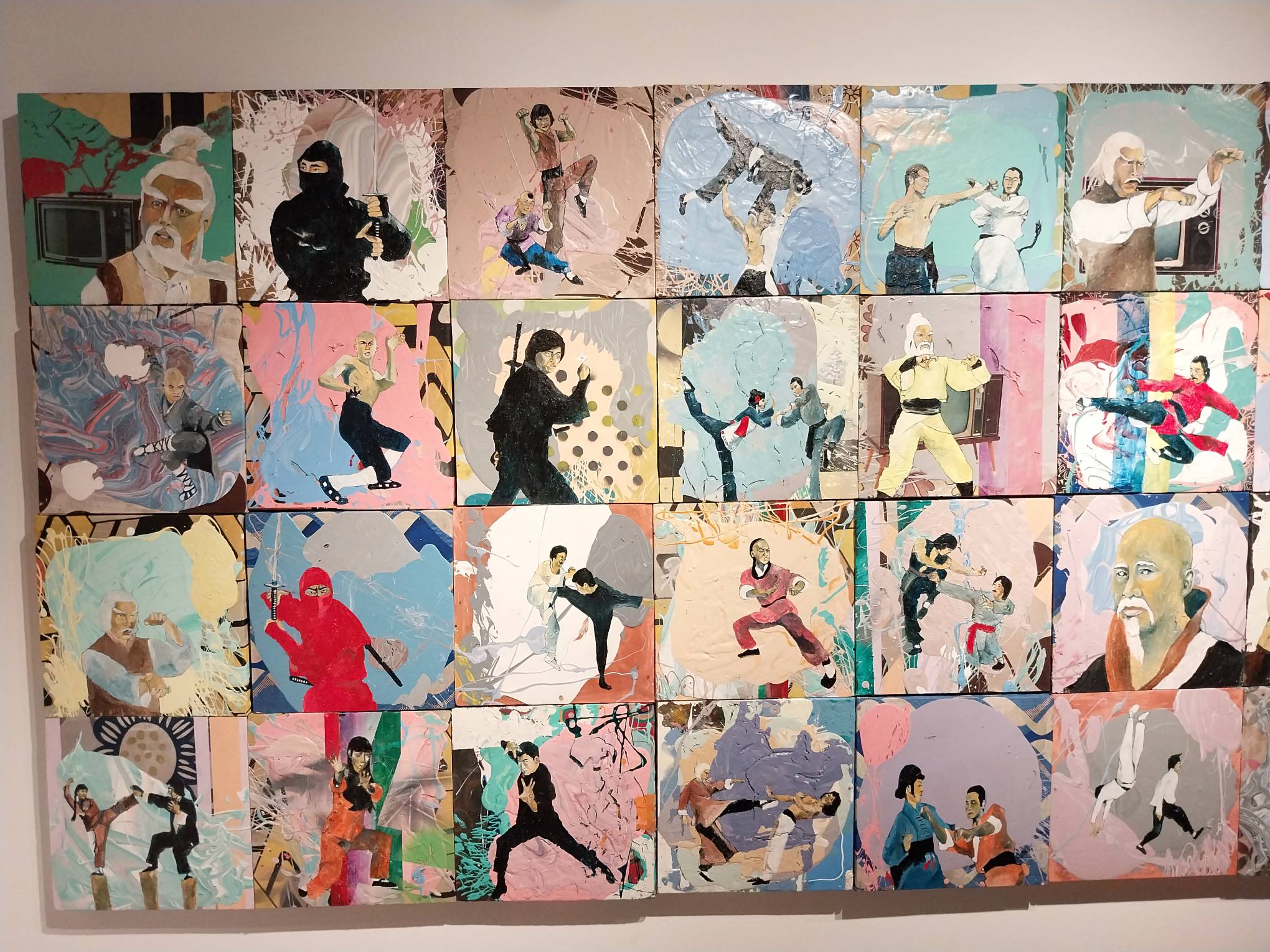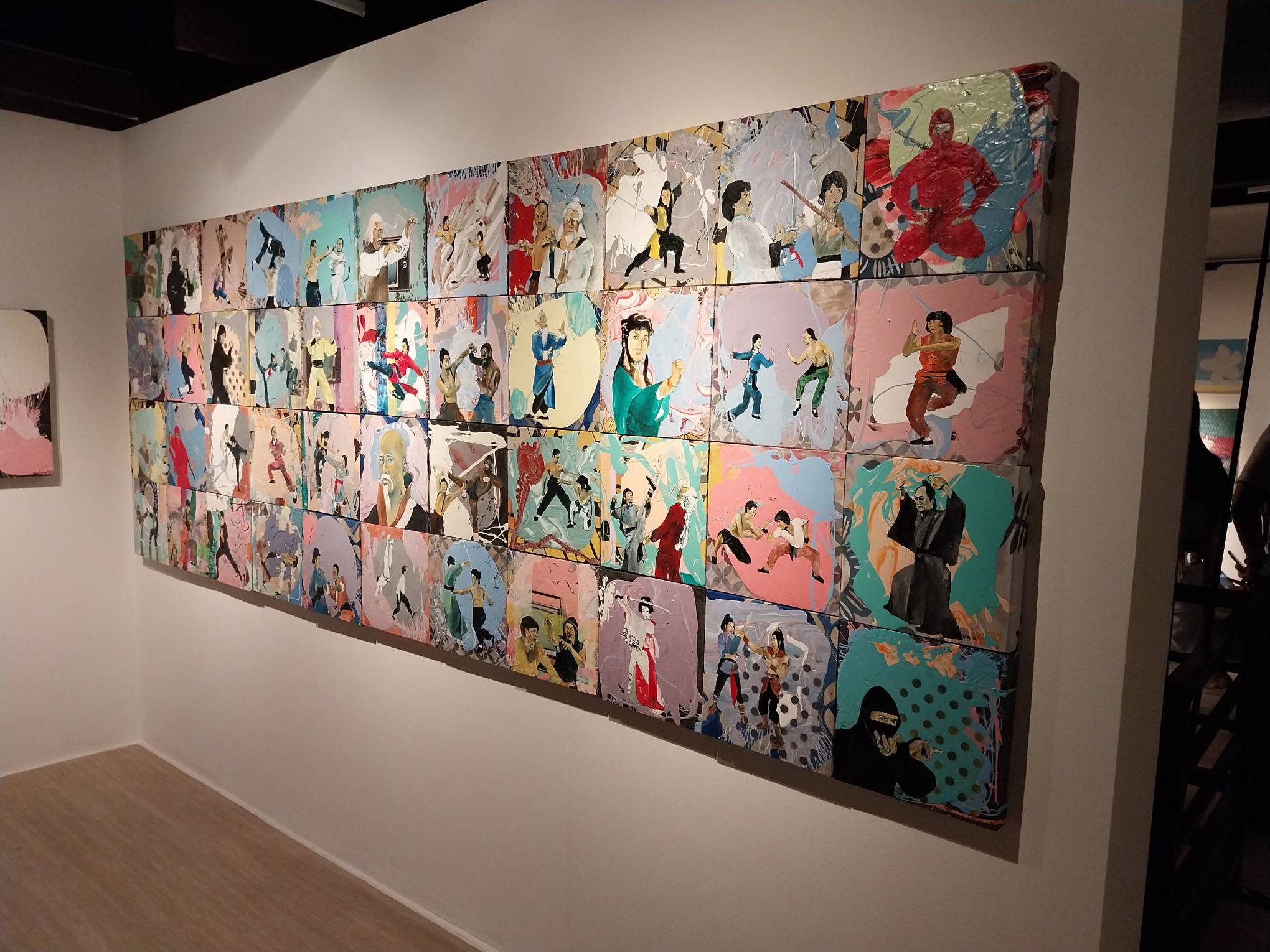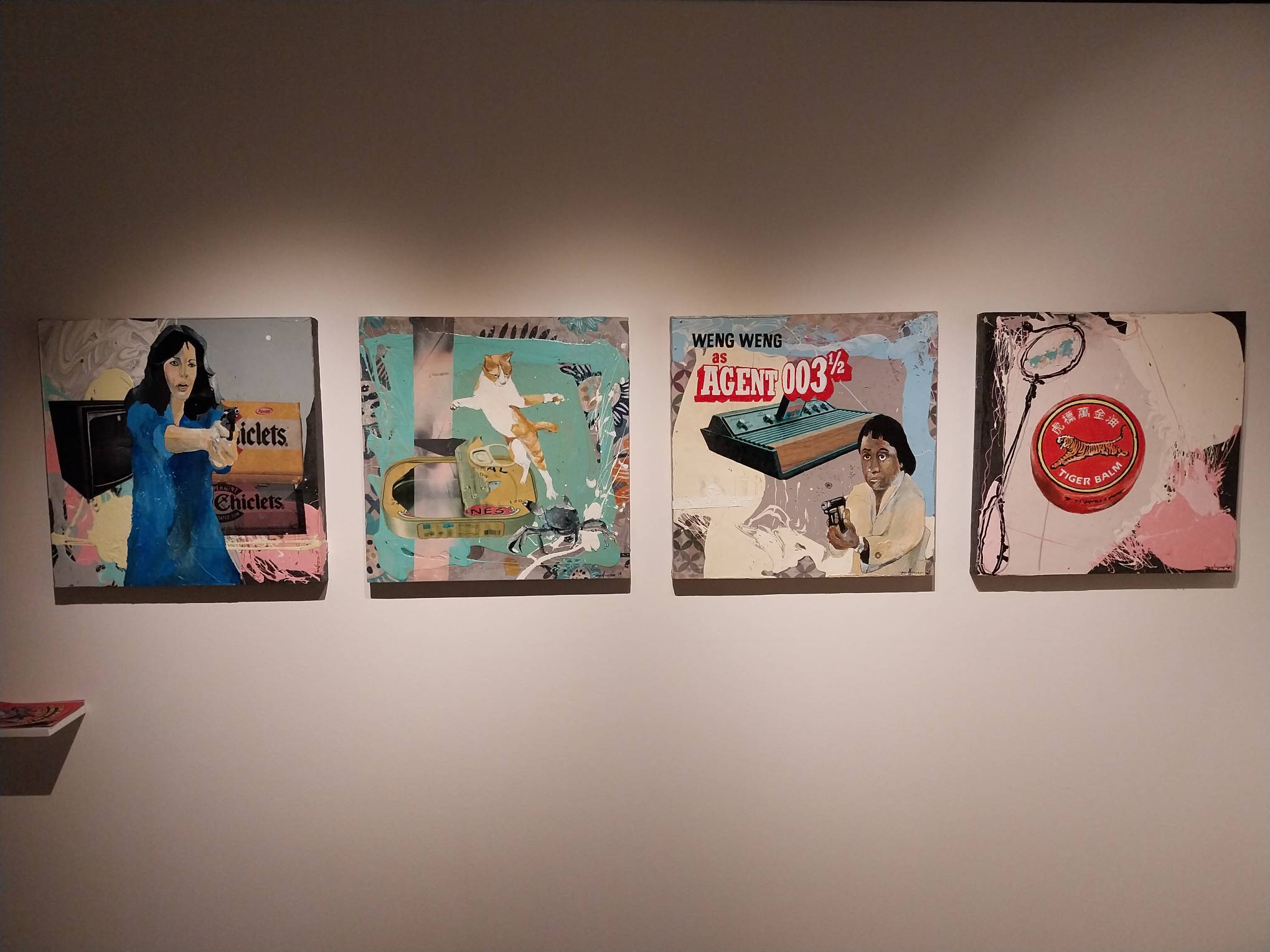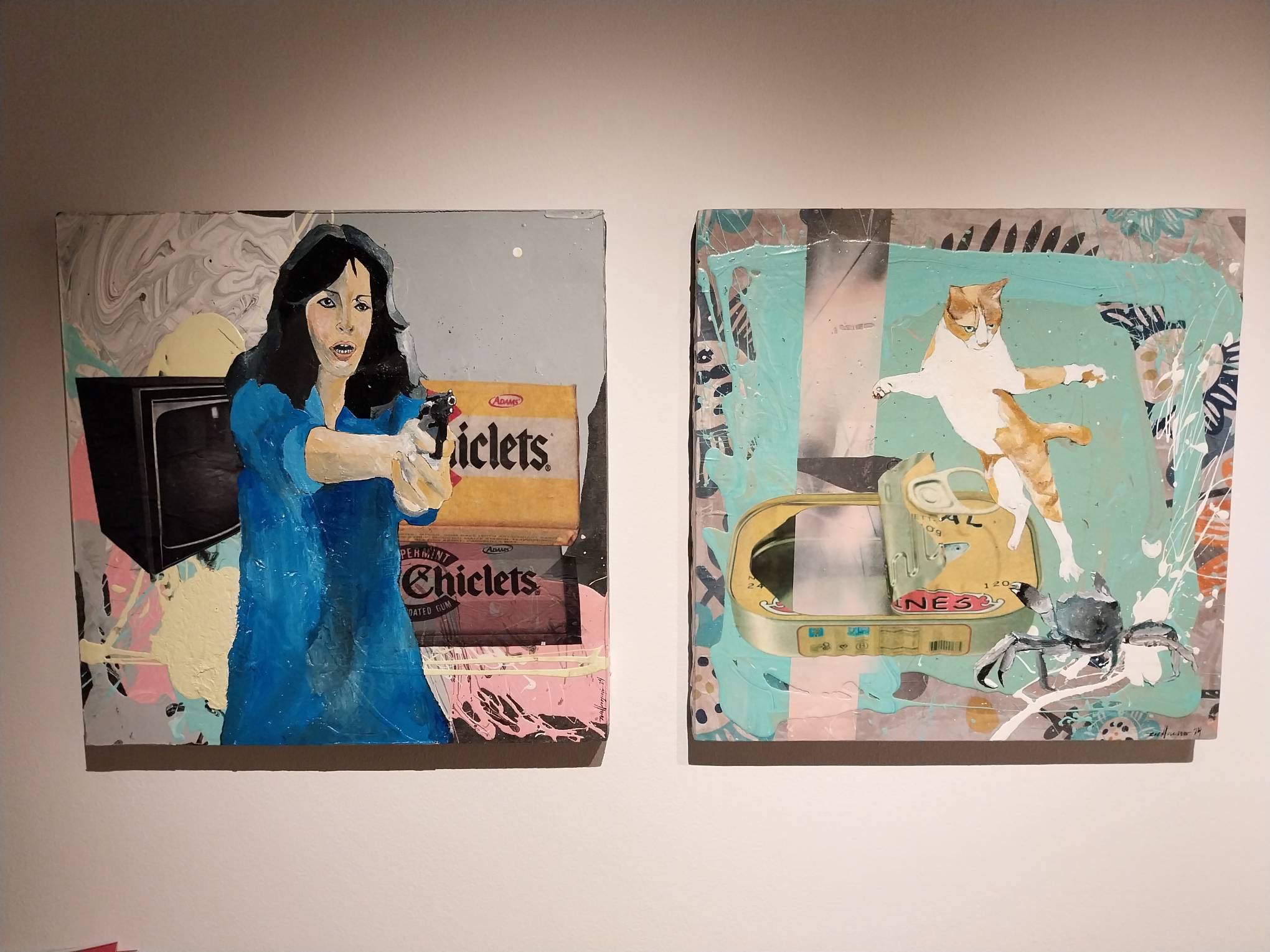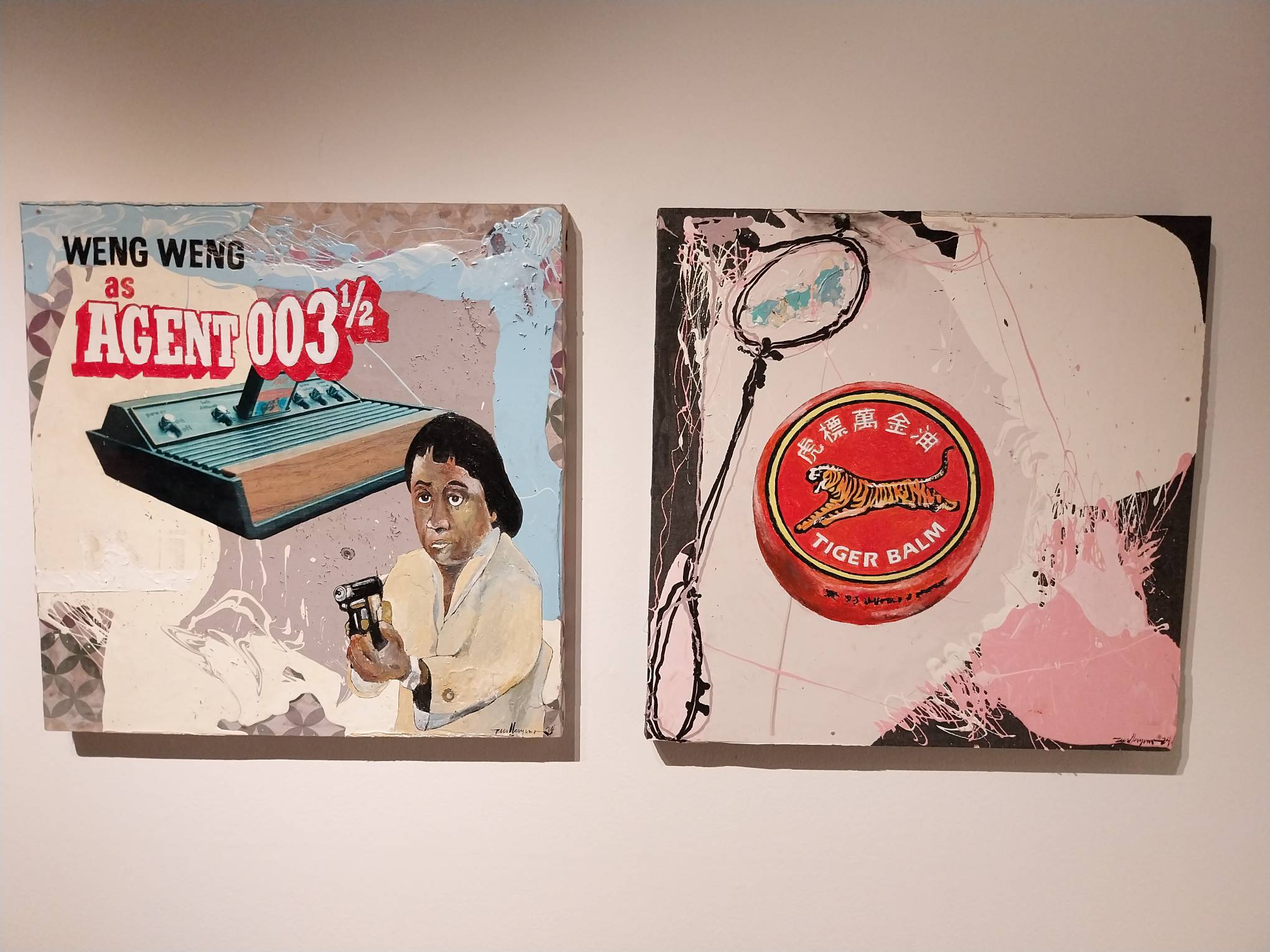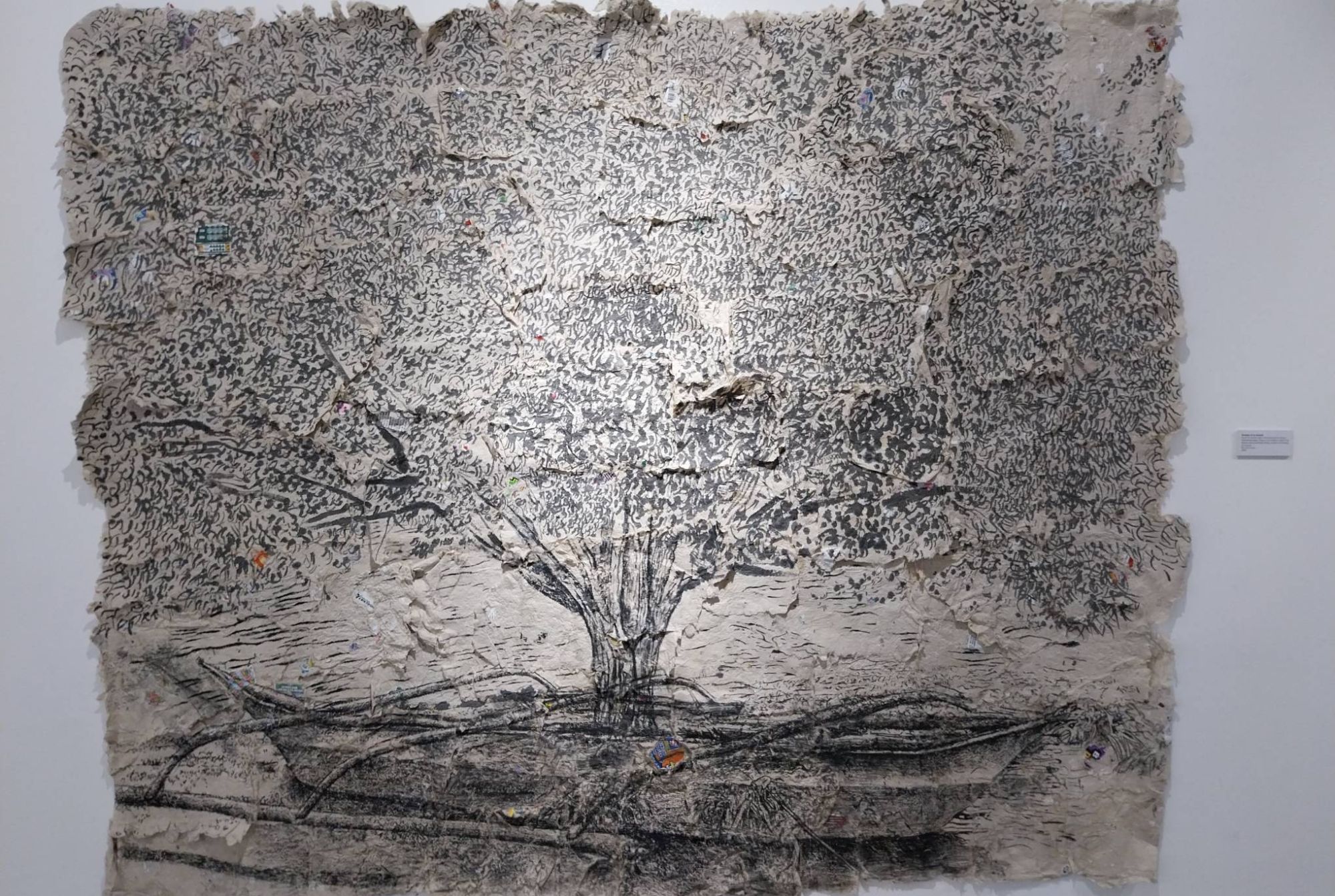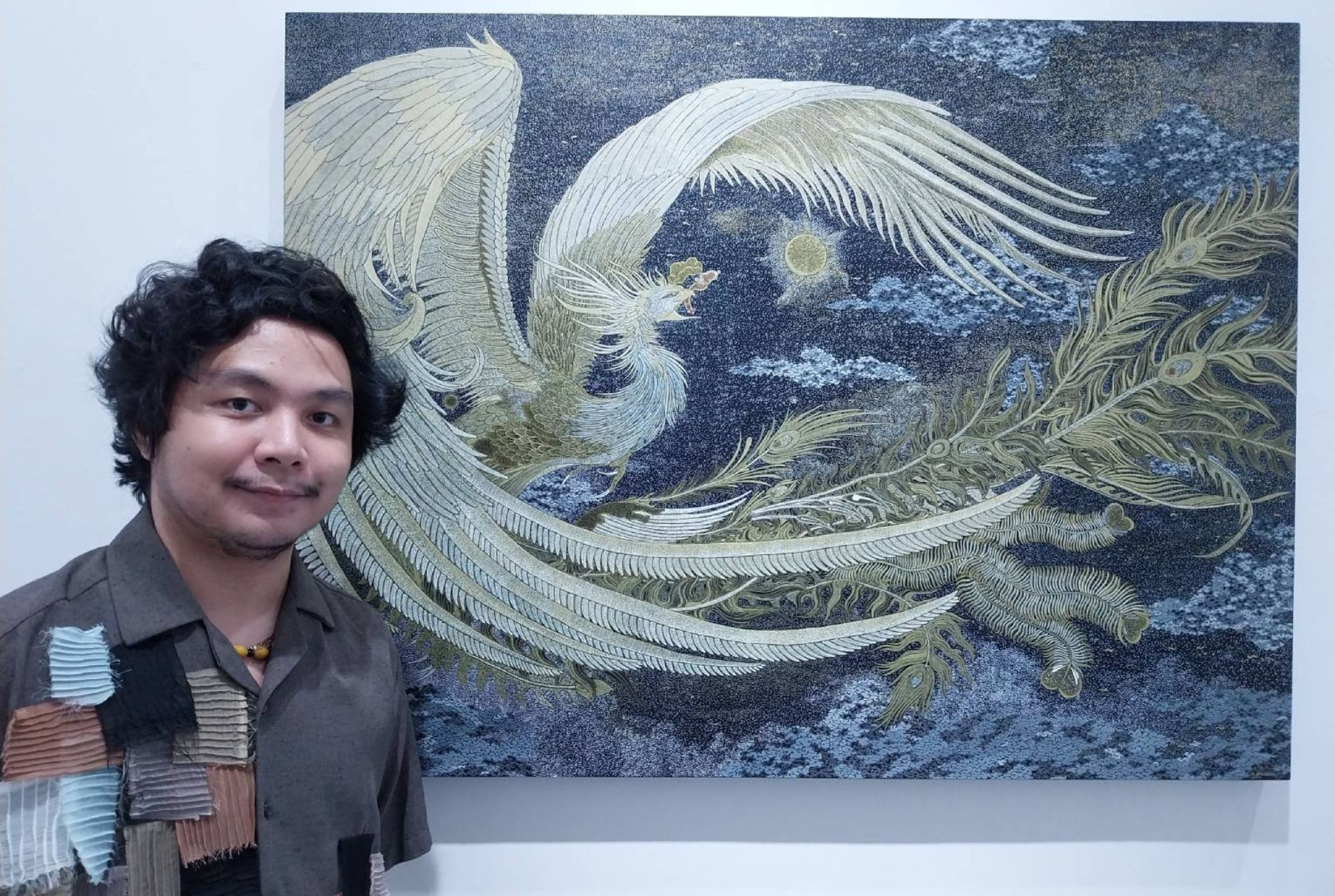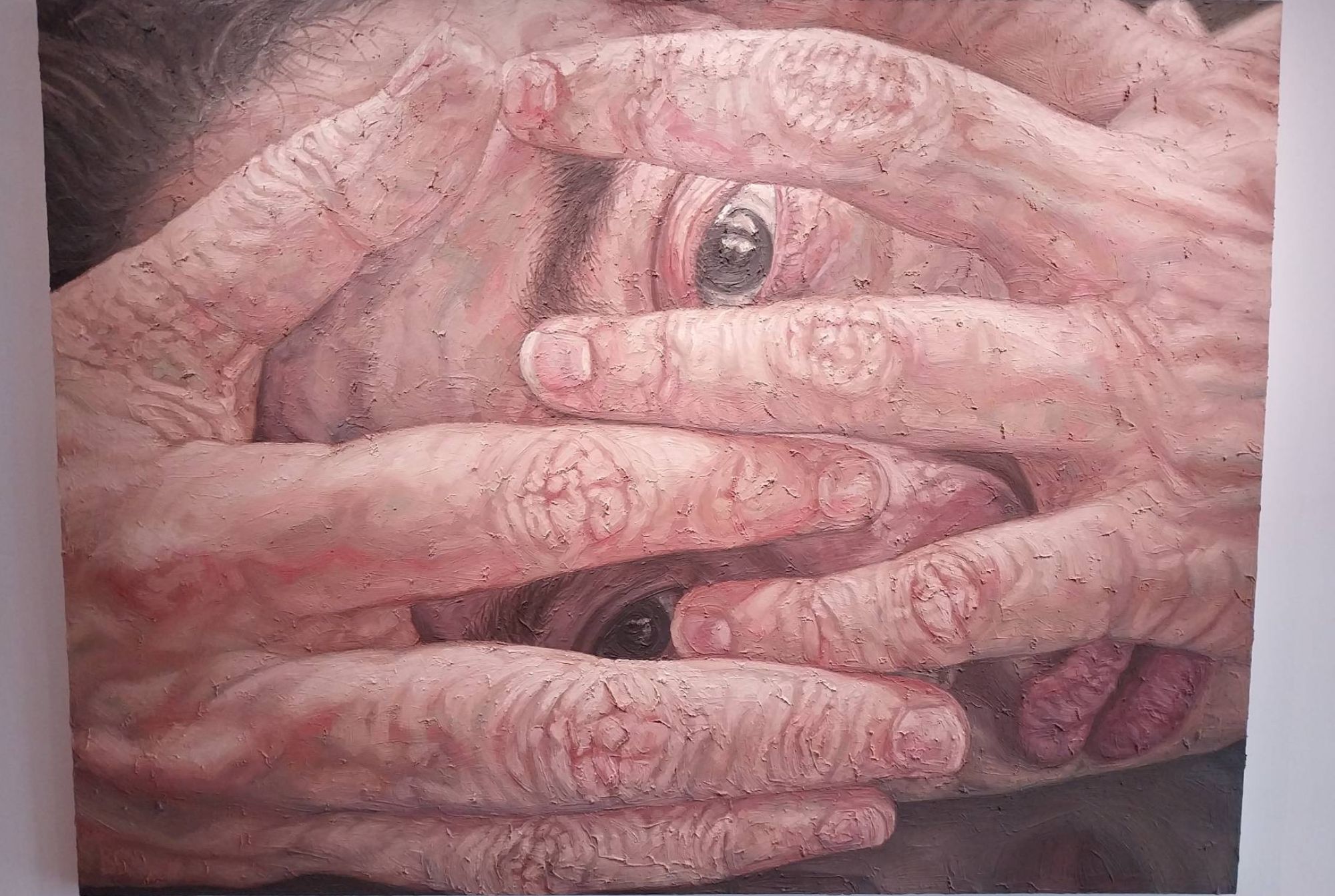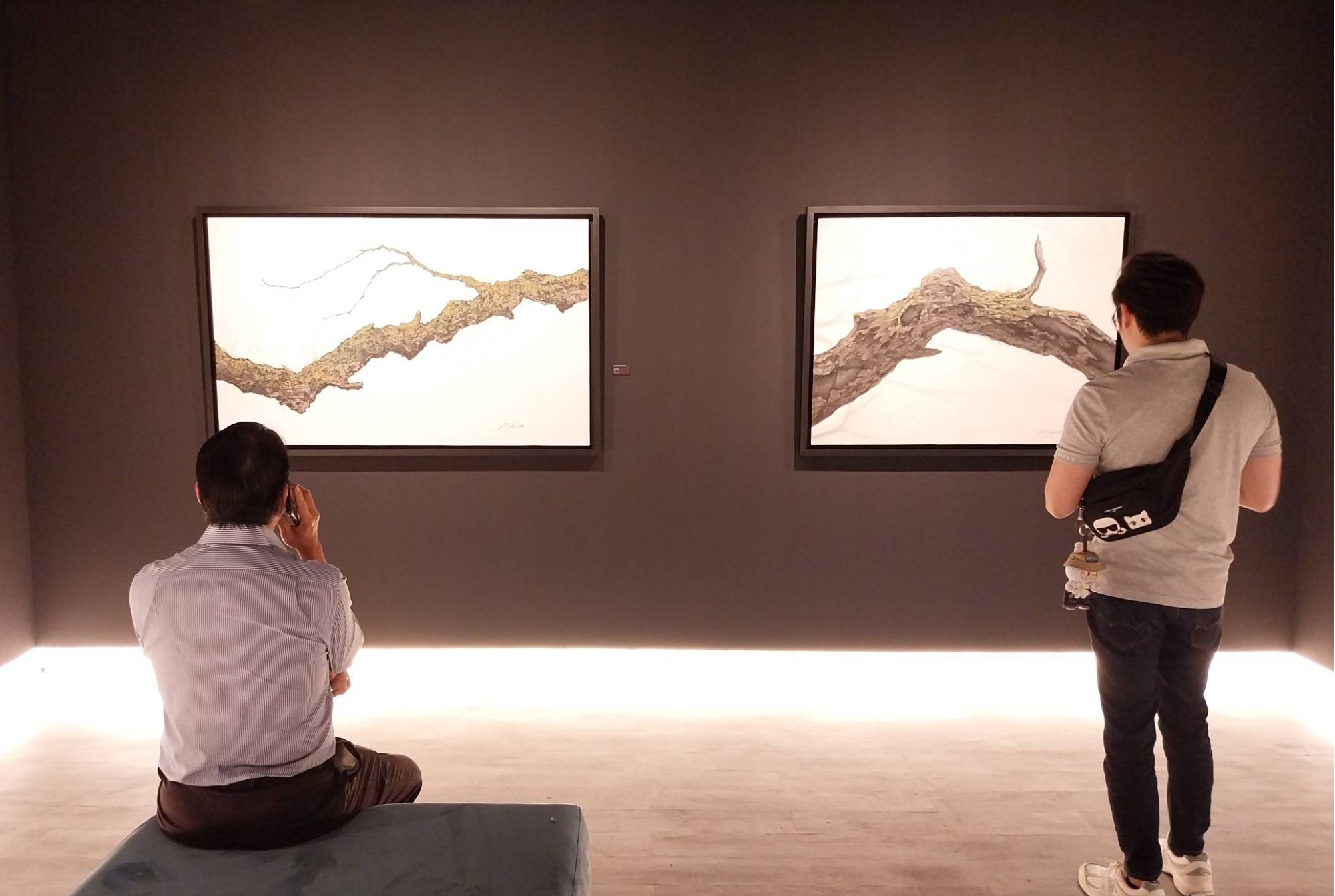Mother/land, the new exhibit by Nicolei Buendia Gupit at Altro Mondo Creative Space, delves into the emotional scars hidden beneath the enduring stories of the Filipino diaspora. Our history with migration is filled with tense desires of seeking better economic opportunities abroad. While wealthy families have long sought opportunities abroad, it wasn’t until the Marcos […]
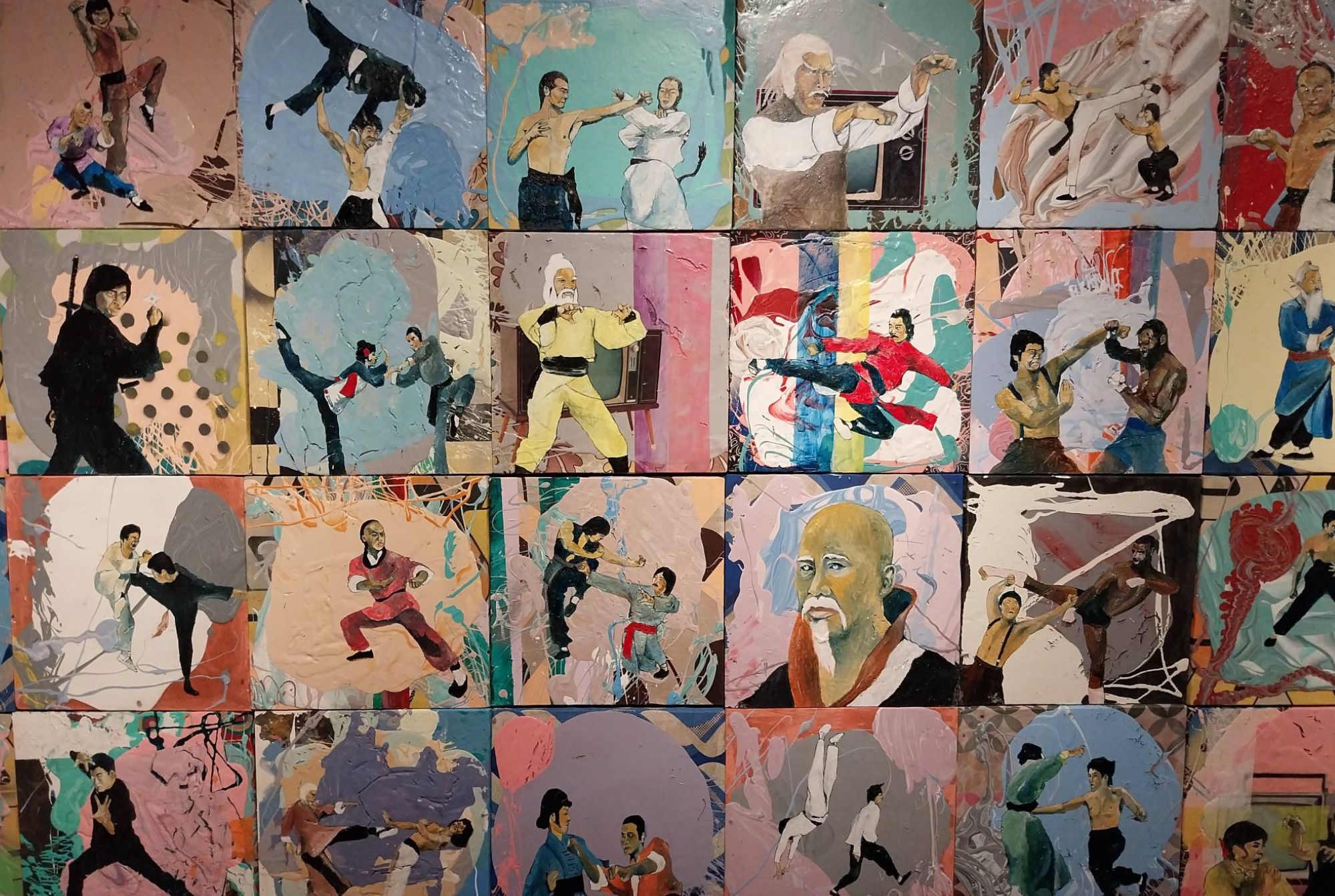
Alain Cuchas Llaguno Crafts a Tribute to B-Movies
The Next Door to Nirvana and Back by Alain Cuchas Llaguno relives the buried glory of our B-movie past. The new exhibit at Gravity Art Space mixes in different cultural signifiers to create this interesting collage of influences, with Llaguno finding the beauty in trashiness.
This exhibit finds itself at a particular moment of cultural cinema. The B-movie is a cheaply-made genre picture, something that got its name for its lack of resources or artistic ambitions. Studios make these movies as a way of gaining cash and audiences quickly. A range of genres count as B-movies: horror, action, kung-fu, wuxia, softcore porn, exploitation.
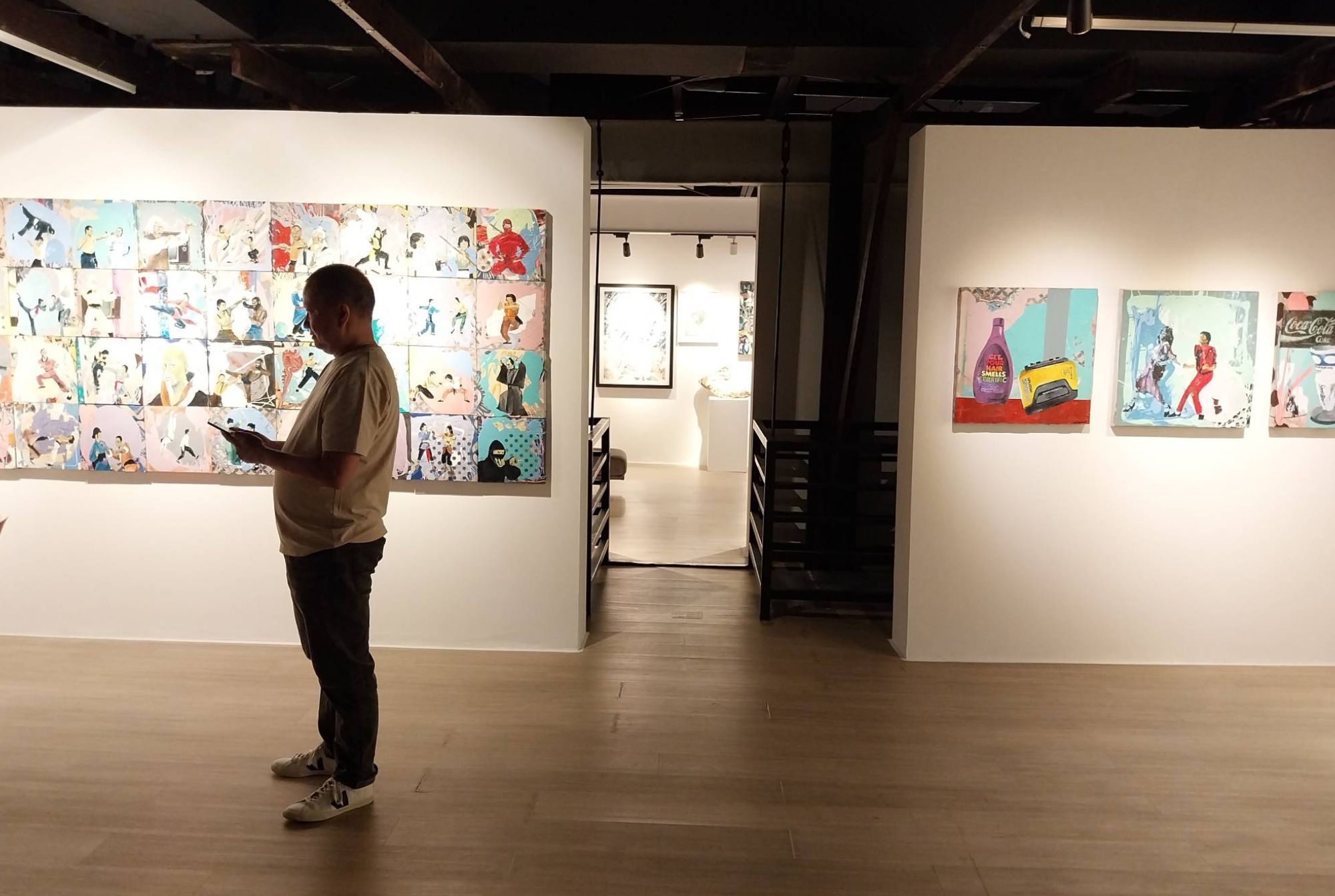
B-movies are deeply important in the history of cinema because they tend to push barriers and train future filmmakers. For this exhibit, Llaguno appears to take inspiration from the B-movies of the past. He mashes it together with other influences like advertisements and television shows from the 1970s and 1980s.
“In the artist’s memories, which he tells us could be the memories as well of other generations—his and those who care to remember—everything matters,” the exhibit write-up said. “And even if they do not, who really cares. The personal and the private, the secret and the inchoate, become part of the artist’s canvas.”
Recontextualizing The Past
There is a lot of joy to be seen in the works by Alain Cuchas Llaguno featured here. The paintings recreate a specific aesthetic style of painted film posters that used to be seen in cinema houses at Cubao or Recto. For these posters, the cinemas tend to aim for similarity rather than accuracy. They give audiences grotesque approximations of movie stars localized for the theater’s needs.
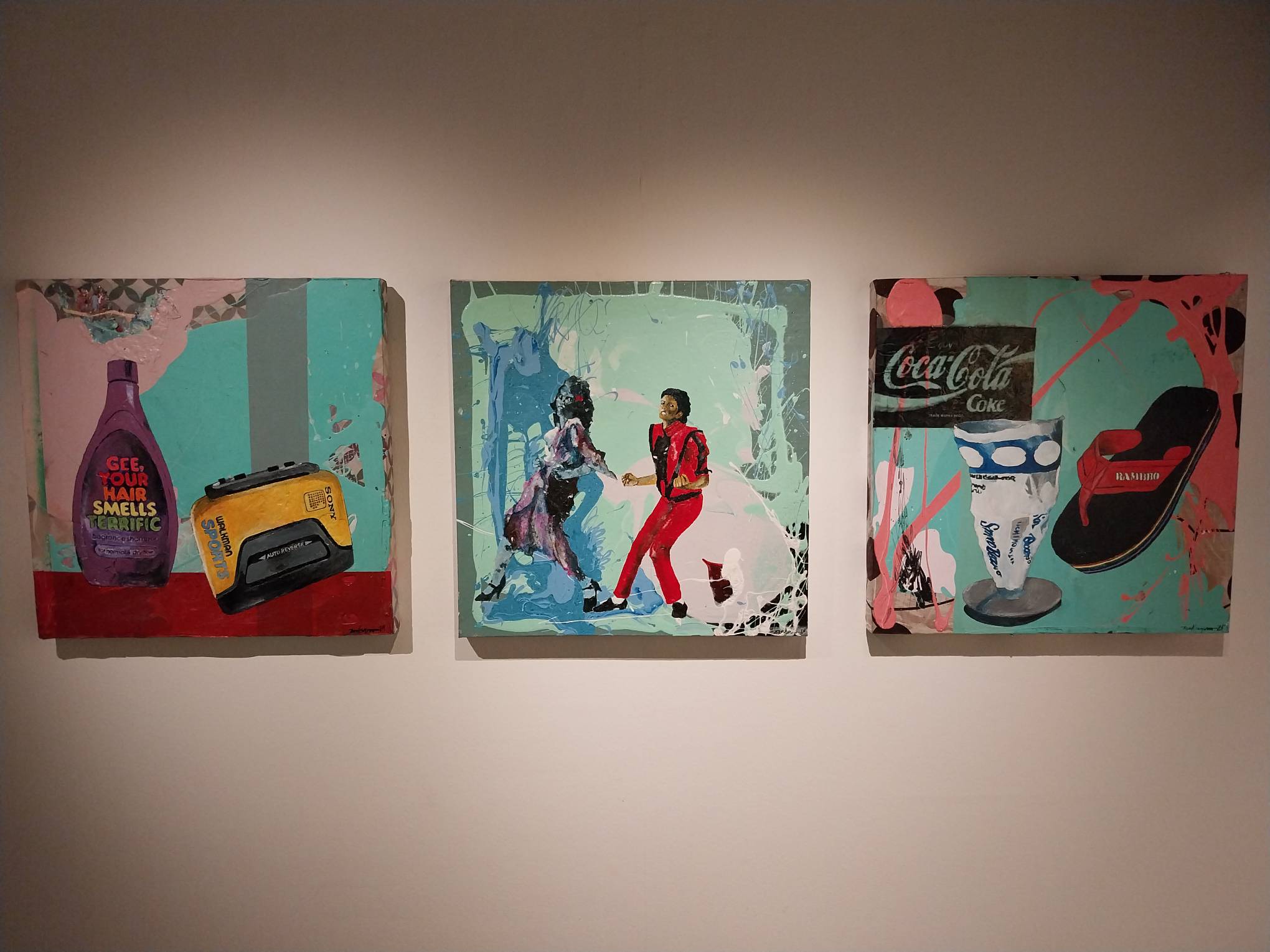
Llaguno mixes that rushed cinematic aesthetic with his own stylistic combination of abstract backgrounds, pop art-esque stylings, and floating product placements alongside the actors. It’s very vivid and grimy like it’s been exposed to the elements.. At times, Llaguno’s paintings resemble layers of torn posters stacked over each other, creating a collage-like effect that string different ideas together.

The different pairings that Alain Cuchas Llaguno is as baffling as it is intriguing. One painting includes Fernando Poe, Jr. and a comedic sidekick of his (Dencio Padilla, maybe?) behind an abstract background of pinks and light blues. Another combines an old Jollibee receipt with sunglasses and a bottle of Pepsi-Cola with a similar background. Still another pairs an armed woman with a television set and Chiclets.
Most of these only make sense in conversation with each other and the broader goal of the exhibit. These strange combinations work towards what Llaguno tries to capture: a hazy recollection of images and memories attempting to tell the stories of the past.
“Remembering is akin to collecting things from the past,” the write-up said. “We gather them all and it does not matter what stories are formed, what narratives are told, so long as we do not forget.”
The Cinematic Wonders of Alain Cuchas Llaguno
Others contain that kind of hyper-specific references that any movie lover could pinpoint easily. “Kung Fu Specials” feels like the centerpiece of the exhibit: a forty-four piece painting that mixes multiple kung-fu and wuxia films together.
You can see poses from posters of Jet Li films from the 2000s, or the old master from Kill Bill Volume 2. Bruce Lee and Jackie Chan show up in a few of them in different fighting stances. One of them looks like Zhang Ziyi from Crouching Tiger, Hidden Dragon. It’s a genuine marvel to behold. More than that, there’s a lot of fun to see how many of the films you can identify.
One of the works centers around legendary B-movie star Weng Weng, the star of For Y’ur Height Only and The Impossible Kid. These movies aren’t great beacons of cinema, but they are fun and strange artifacts of a different era. That historical importance allowed Weng Weng to become a cult star even after his death at 34, including a whole documentary about him. That outsized importance influenced at least part of the works featured in the exhibit.
“In the cinematic universe of Alain Cuchas Llaguno, Weng Weng is alive,” the write-up said. “He stares from the canvas, serious and elfin. He carries a gun if only to live up to his status as an action star. Behind him is a device that plays music or video, a tribute to how a character like this ‘dwarf’ will resist being forgotten even as the technology for capturing sounds or images have been constantly changing.”
Tribute to the Past
The Next Door to Nirvana and Back works well as a tribute to a bygone era. Alain Cuchas Llaguno taps into the same kind of entertaining mix-and-match that filmmaker Quentin Tarantino does with his own tributes to the past. The exhibit gives out an earnest, happy energy as it clings to preserving the memories of the past.
The exhibit is open to the public until November 30.
Photos by Elle Yap.
Related reading: Sine Pop: A post-war home turned “Boutique Theatre” in Cubao
